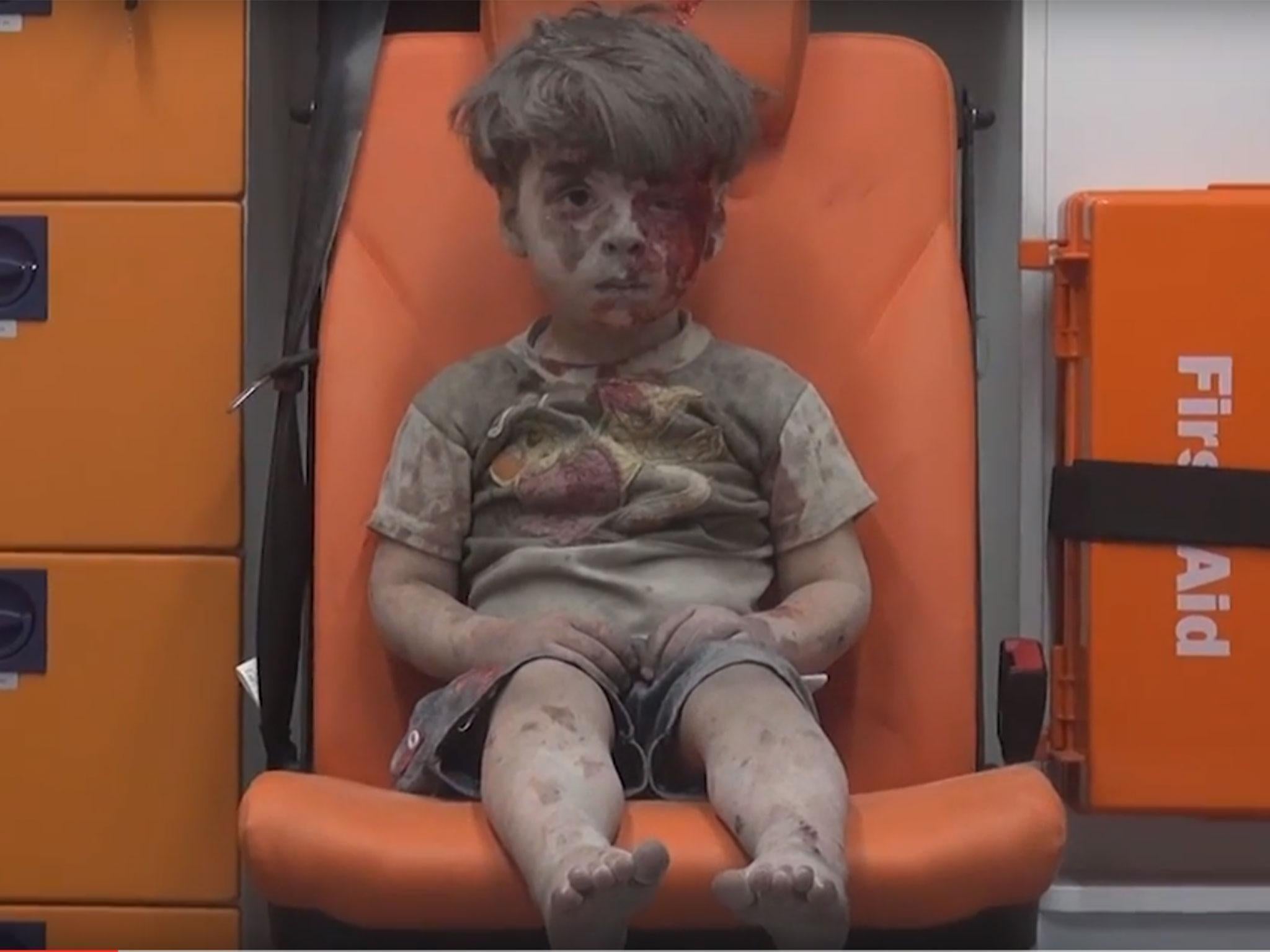The image of Omran Daqneesh is not the new Aylan Kurdi – it's even worse than that
The Syrian Observatory for Human Rights has estimated that to the end of May this year up to 14,000 children have been killed during the Syrian war, with many tens of thousands injured and in need of aid


The photo of five year old Omran Daqneesh, whose dazed and bloodied face was seen around the world yesterday, should serve as a timely reminder that the situation in Syria is getting worse, not better. Five years after the country’s civil war began, we are seemingly as far away from a resolution as ever.
Images of minors injured or killed by war inevitably have a particular power. Children, above all others, can bear no responsibility for the carnage inflicted by adults around them: they are the innocents in this slaughter. And Omran is just one of many, of course. The Syrian Observatory for Human Rights has estimated that to the end of May this year up to 14,000 children have been killed during the Syrian war, with many tens of thousands injured and in need of aid.
Omran then is a symbol, not a singular example. So why him? Perhaps it was something in the blank way he looked, and the manner in which he wiped his eye with his hand, which brought to mind a child who has been unexpectedly woken from a deep sleep and can’t quite work out where they are. That connection between a far off tragedy and an everyday normality grabs our attention. We weep for Omran because we see in him our own children.
I felt that same connection when I first saw the images of Aylan Kurdi’s body, washed up unceremoniously on a Turkish beach last September. The photograph which showed him lying at the shoreline on his front reminded me of seeing my children fast asleep in their beds on their tummies. The difference between sweet dreams and very unsweet death seemed so desperately slight. That was one of the reasons we decided to publish that photograph more prominently than some of the others which had been taken at the scene.
Yet nearly a year on from Aylan’s death, how much has really changed? Those fleeing Syria and other conflict zones are still taking extraordinary risks to reach Europe. The EU’s deal with Turkey – and various European border closures – may have reduced numbers arriving in Greece, but the UNHCR still anticipates that nearly a quarter of a million people will enter Europe from the east by the end of the year. As of June, a further 50,000 were thought to have entered Italy from Libya. There have been several thousand deaths along the way.
Meanwhile, many refugees, including thousands of unaccompanied minors, remain trapped in official and unofficial camps, hoping that European governments of one hue or another will take mercy on their plight. As for the UK, the Home Affairs Select Committee expressed concern last month that Britain was not on course to fulfil its pledge to take in 20,000 refugees by 2020. What a pitiful indictment of an already unambitious programme.
For those who have been unable to flee or who have taken the conscious decision to stay in Syria, the bloodshed continues unabated. It is estimated that over 400,000 people in total have been killed during five years of war. Large parts of Aleppo, a city once home to 2.3 million, have been reduced to rubble and UN humanitarian aid has been unable to get through battle lines for a month. Regime forces, supported by their Russian allies, carry out frequent airstrikes – using all sorts of weaponry. There frequently seems little effort to finesse any targeting.
On the other side, rebel advances are said to have been made possible by the arrival of new equipment, allegedly provided by backers in Saudi Arabia and Qatar, with America turning a blind eye. Syria’s conflict has become as much a proxy war as a civil one. And there is no end in sight.
The image of Aylan Kurdi haunted us because we knew for him there would be no tomorrow. Footage of poor, baffled Omran in the back of an ambulance should haunt us more; because for him a new day dawning in Aleppo will bring only more misery.
Join our commenting forum
Join thought-provoking conversations, follow other Independent readers and see their replies
Comments